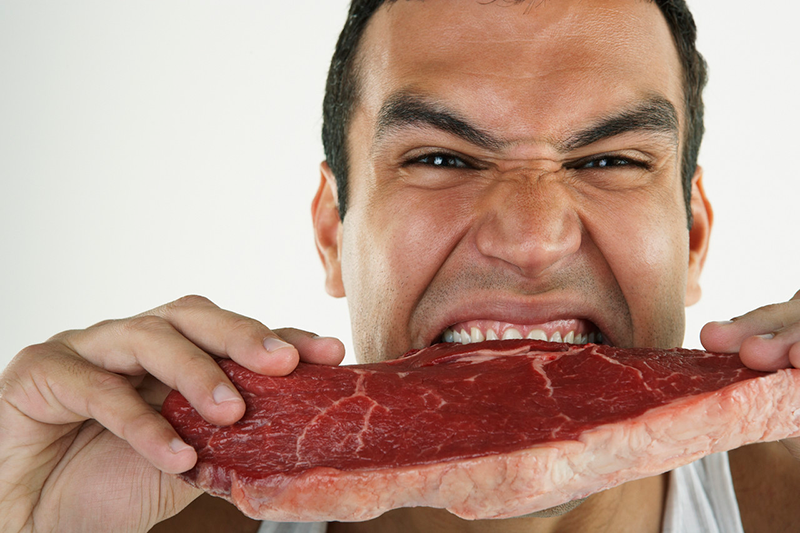The Pros and Cons of High-Protein Diets

Swapping simple carbs and sweets for high amounts of protein may help you not only lose weight but also keep it off. It may also preserve your muscle density.
As the number of people with obesity rises in the United States, researchers have been looking at the best ways to lose weight and keep it off. Clinical trials lasting from six months to a year have found that eating high amounts of protein helps dieters not only lose weight but also keep it off, and it may preserve muscle density.
Protein makes you feel full. Specifically, it increases levels of three hormones in your gut that signal that you’ve eaten enough and might stop.
Protein also may boost weight loss because it takes more energy to digest than carbohydrates or fat.
In addition, preserving muscle may help you avoid the trap of ending up with a slower metabolism from dieting. A slower metabolism doesn’t burn enough calories, which can contribute to weight gain or prevent weight loss.
But the final result of your diet will depend on how many calories you consume. If you tend to overeat, you’ll still need to cut back on total calories and maintain that lower consumption to avoid regaining lost pounds.
Replacing simple carbohydrates and fat with protein may make it easier to stick to your diet, and, initially, other favorable changes may occur. (That said, always make sure to consult with your doctor before starting a new diet.)
YOU MIGHT ALSO LIKE: Why Does Diet Advice Keep Changing?
How high-protein diets work
The terms “high-protein” and “low-carb” are generally interchangeable. Different diets have different formulas, but most operate on the theory that if you restrict carbs — and eliminate the simple and highly processed ones — your body will be forced to burn fat for energy, a state known as ketosis.
Restricting carbs also causes your body to shed excess water, which is a large part of why these diets result in such dramatic weight loss in the first weeks.
Potential drawbacks of a high-protein diet
Critics of these diets — including the American Heart Association — argue that they often lead to consuming more animal protein, which can contribute to health risks from increased saturated fat.
Severely restricting carbohydrates may leave dieters short of essential nutrients and fiber that come from vegetables, fruits, and whole grains. There is also evidence that short-term high-protein diets can place a strain on your kidneys, causing a buildup of acid, and they may cause kidney stones.
Eating a variety of proteins (which include legumes and nuts) can greatly cut your risk of high blood pressure, a six-year study of more than 12,000 people found. But that same study found that the people who ate the most protein were at greatest risk for high blood pressure.
Most studies of high-protein diets have not lasted longer than one year, so the long-term effects of consuming this type of diet are not well understood.
How much protein do you really need?
The amount of protein that’s right for you is determined by how many calories you need, which in turn will be influenced by your level of activity.
According to the 2020-2025 Dietary Guidelines for Americans, you need between 10 and 35 percent of your total daily calories from fat. If you are consuming 2,000 calories a day, that’s between 200 and 700 calories of protein a day.
What does that look like?
- The palm of your hand (without fingers) or a deck of cards represents about 3 ounces of protein.
- Three ounces of chicken has about 100 calories and 18 grams of protein.
- A 3-ounce hamburger (97-percent lean) has 164 calories and about 22 grams of protein.
- An egg has 72 calories and a little more than 6 grams of protein.
If you’re eating protein at every meal, you’re probably within the caloric range and consuming the recommended amount of protein. The Dietary Reference Intakes (DRI) is 56 grams of protein a day for men over the age of 18 and 46 grams per day for women over 18.
In reality, most people probably eat more than the recommended amount of protein. If you have a glass of milk or cheese on a burger, you’ve likely gone over. But those guidelines are for people who exercise less than the recommended 30 minutes a day. If you are very active, work out regularly, or are pregnant or lactating, you need more protein.
To figure out specifically how much protein you need, divide your weight by 2.2 to determine your weight in kilograms. Multiply that number by 0.8 if you are sedentary, or a higher number — up to 1.6 — if you are fit and active to determine how many grams of protein per day you should eat. Research indicates that any more than double the DRI won’t have a beneficial effect.
Strive to maintain nutritional balance
It’s important to make good protein choices. If animal protein is your main source, choose fish, chicken, lean pork, and limited lean red meat. Eggs and low-fat dairy products are also good sources.
Don’t forget about plant-based sources. Good choices include:
- Tofu and other soy products
- Nuts and nut butters
- Seeds
- Quinoa
- Legumes, such as kidney beans, pinto beans, garbanzo beans, split peas, and lentils
Eating a high-protein diet for a limited time probably won’t hurt, may result in rapid weight loss, and could have other benefits. But it’s important to ensure you’re getting the other nutrients you need to maintain your health. Research shows that all diets are effective if you are creating an energy deficit by reducing calories, increasing activity, or both.
The best diet for you is the one that you will stick to.
Updated:
January 12, 2023
Reviewed By:
Janet O’Dell, RN